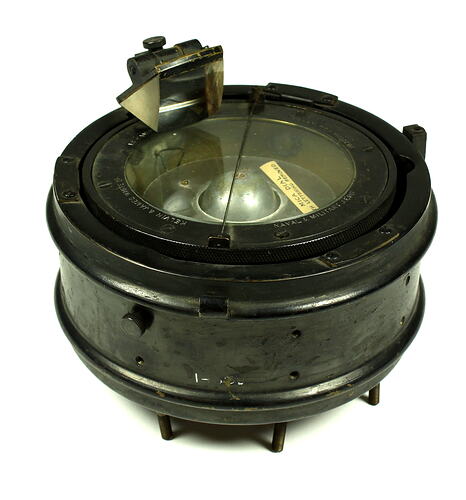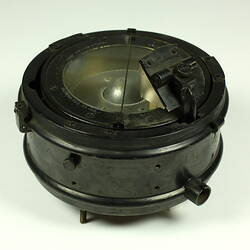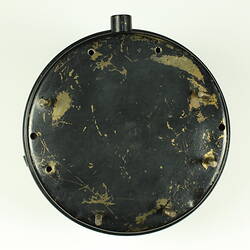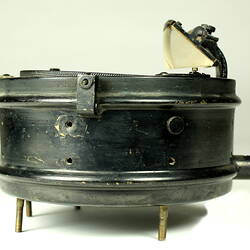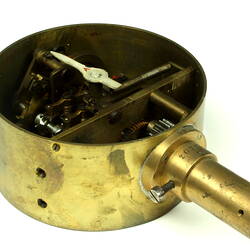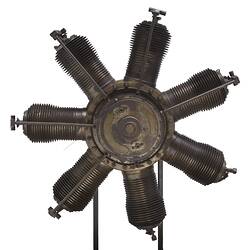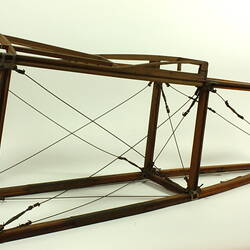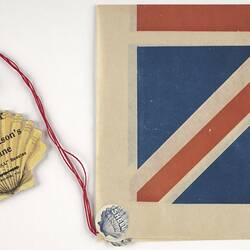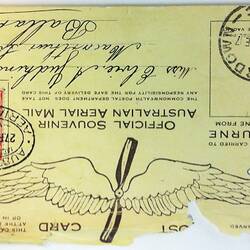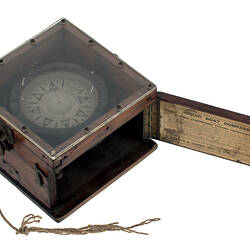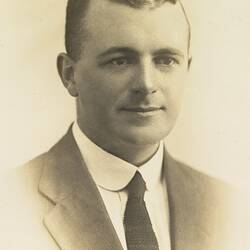Summary
Pattern 200 gymbal-mounted aircraft navigational compass manufactured by Kelvin & James White Ltd, of 18 Cambridge Street, Glasgow. Serial no.106. The Pattern 200 aircraft compass was designed by Captain Creagh-Osborne, of the Royal Navy, in 1911. Kelvin & James White Ltd was formed as a public company in 1900, to acquire the Glasgow-based scientific and navigational instrument making business established by James White (1824-1884), in 1850. Lord Kelvin (Sir William Thomson), a long-time collaborator with White, joined the company as a director after resigning his chair as Professor of Natural Philosophy at Glasgow University. Following Lord Kelvin's death, the company became Kelvin Bottomley & Baird Ltd, in 1913, and in 1947 amalgamated with competitors Henry Hughes & Sons Ltd to become Kelvin Hughes Ltd.
This compass was associated with Australian aviation pioneer Basil Watson, who built a Sopwith-type biplane at his parent's house 'Foilacleugh', in Elsternwick, Victoria, between July and October 1916. Watson was first introduced to aviation by Harry Hawker during early 1914, and travelled to England with Hawker, where he worked as an engineer and test pilot with the Sopwith Aviation Company, and later the Imperial Army. He was severely injured in a crash after an engine failure during a test flight in June 1915, and returned to Australia 12 months later after being declared medically unfit for further military service. After constructing his own plane from scratch in little more than 3 months, Watson piloted the plane on pioneering flights to Bendigo and western Victoria. He performed many public flying acrobatic demonstrations and flew the first official airmail between Mt Gambier and Melbourne in February 1917. He was killed when a component of his aircraft failed during an aerobatic demonstration over Point Cook, Victoria, on 28 March 1917, causing the wings to collapse, plunging the aircraft into Port Phillip Bay. His death was the earliest recorded aviation fatality in Australia.
The compass was donated to the museum by Basil's father James Isaac Watson, in 1919, together with a number of components recovered from the wreckage after the crash and other instruments believed to have been used by Basil Watson on the plane.
Physical Description
Magnetic dial compass, enclosed in a circular brass case with gymbal-mounting and hinged glass sighting prism.
More Information
-
Collection Names
-
Collecting Areas
-
Acquisition Information
Donation from James I. Watson, 28 Oct 1919
-
Manufacturer
Kelvin & James White Ltd, 18 Cambridge Street, Glasgow, Scotland, Great Britain, 1915 circa
-
User
Mr Basil G. Watson, Melbourne, Australia, 1916-1917
Believed to have been fitted to the Sopwith-type biplane built by Basil Watson, of Elsternwick, Victoria, in 1916. -
Inscriptions
Stamped around rim of compass casing: 'KELVIN & JAMES WHITE LTD. / 18 CAMBRIDGE STREET, GLASGOW. / NAVAL & MILITARY AERO / PATTERN 200 No 106'
-
Model Name or Number
-
Brand Names
-
Classification
Air transport, Aircraft, Components - navigation instrumentation
-
Category
-
Discipline
-
Type of item
-
Keywords
Aeronautical Instruments, Aviation Pioneers, Compasses, Navigation, Navigation Instruments, World War I, 1914-1918
